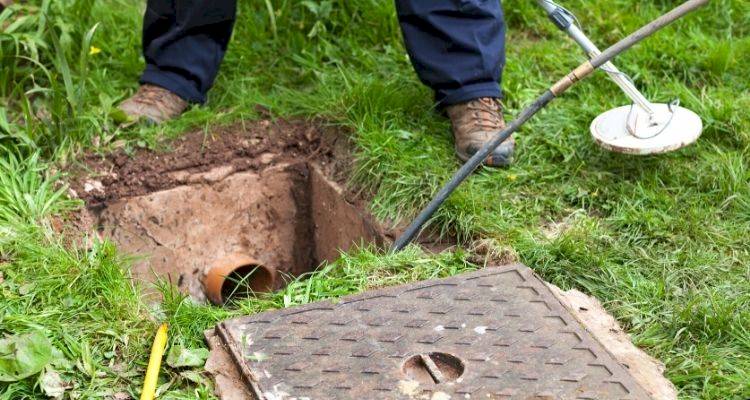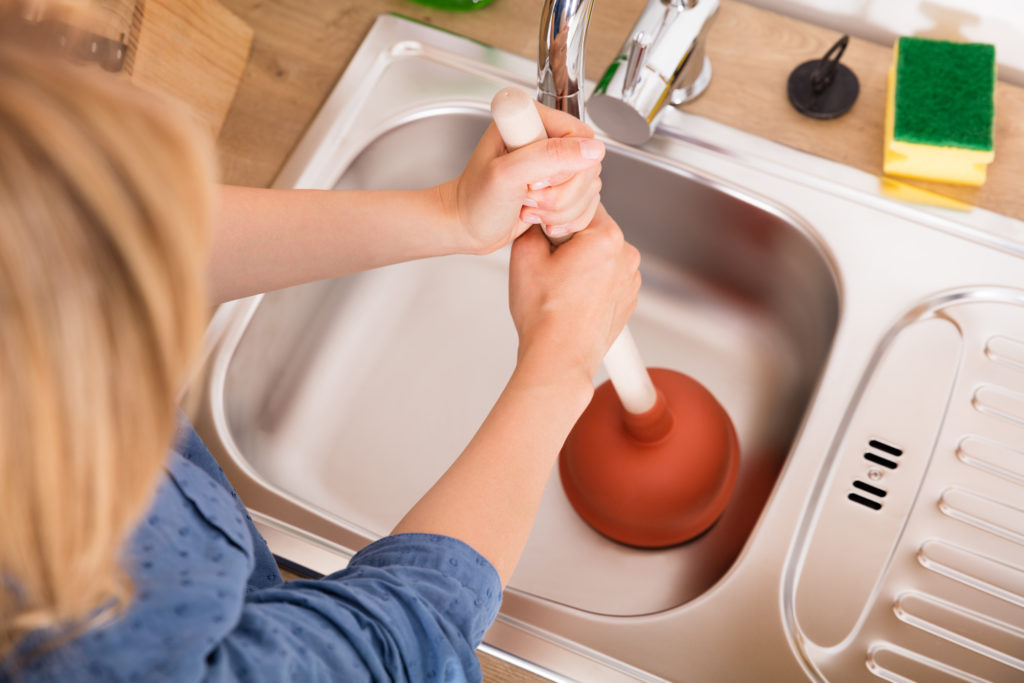Techniques for Dealing with a Blocked Drain Prior to Reaching out to Expert Help
Techniques for Dealing with a Blocked Drain Prior to Reaching out to Expert Help
Blog Article
On this page underneath you can locate more high-quality advice regarding Tips for Dealing with Clogged Drains and Sewer Lines.

Introduction
Dealing with an obstructed drainpipe can be an aggravating experience, interfering with everyday tasks and potentially creating damage to your building. Nevertheless, before connecting to plumbing experts, there are actions you can require to address the problem yourself. In this overview, we'll explore DIY services and preventive measures to deal with an obstructed drainpipe effectively.
Recognizing the Issue
The primary step in addressing an obstructed drainpipe is acknowledging the indications. Sluggish drainage, gurgling audios, foul odors rising from drains pipes, or water backing up are common indicators of an obstructed drain. Determining these indications early can aid prevent even more difficulties.
Usual Root Causes Of Blocked Drainpipes
Understanding the elements that contribute to drain clogs is necessary for reliable resolution. Common offenders include hair, soap scum, oil, food particles, and international objects like sanitary items or paper towels. Tree origins attacking below ground pipelines can also cause considerable obstructions.
DIY Solutions
For small clogs, numerous do it yourself remedies can be efficient. Putting boiling thin down the drain can aid dissolve oil and debris. Sodium bicarbonate and vinegar or a combination of salt and baking soft drink can function as natural cleansers. Using a plunger or plumbing snake to dislodge blockages is another alternative.
Tools and Devices
Having the right tools handy can make do it yourself drainpipe cleaning up extra reliable. A bettor is a functional tool for getting rid of obstructions in sinks, commodes, and showers. A plumbing serpent or auger can reach much deeper clogs, while drainpipe cleaning chemicals can be used carefully for persistent blockages.
Safety nets
To prevent future clogs, adopting preventive measures is vital. Install drain guards or filters to capture hair and particles before they enter the pipelines. Regularly flush drains with warm water to dissolve grease accumulation, and stay clear of taking care of oil or solid waste away.
When to Call a Professional
While DIY options can fix small clogs, certain indications show the requirement for professional assistance. Consistent clogs, foul odors despite cleaning up initiatives, or several drains pipes supporting all at once are red flags that warrant skilled intervention.
Picking the Right Pipes Service
When selecting a pipes solution, think about aspects such as experience, licensing, and consumer reviews. Pick a reliable plumbing technician with a performance history of top quality handiwork and clear prices techniques.
Expense Considerations
The cost of expert drainpipe cleaning services can vary depending on the intensity of the obstruction and the plumbing professional's prices. Request quotes from several suppliers and ask about any type of added fees to ensure openness and avoid surprises.
Safety and security Precautions
When trying do it yourself drain cleaning, focus on security. Put on safety gloves and glasses to stay clear of contact with damaging chemicals or germs. Never blend different drain cleansing items, as this can create dangerous fumes.
Situation Researches
Real-life instances show the efficiency of DIY solutions and the relevance of prompt specialist intervention in settling drain clogs.
Conclusion
By complying with the pointers laid out in this overview, you can properly take on obstructed drains and prevent future pipes problems. Whether choosing do it yourself solutions or seeking professional help, punctual activity is vital to maintaining a healthy and balanced pipes system and maintaining the honesty of your home.
How to Clear a Clogged Drain Yourself (And When to Call In the Professionals)
What Can Clog a Drain
Dirt Skin flakes Hair Grease Soap scum Food Offset pipes Tree roots Small objects Mineral buildup DIY Tricks to Unclog a Drain
You can fix this! Once you have identified the source of the clog (or have a vague idea), you can try one or a combination of these fixes in order to clear your plumbing.
Wire Hanger or Snake
Untangle and clear out hair from a drainpipe with a homemade snake. Use a straightened-out wire hanger with a 90-degree angle hook to locate the clog and drag out any unwanted material.
Remember not to push the clog further down to where the wire hanger cannot reach! If you need to follow up with a plunger, give it a try. Your efforts might be more successful after it’s been wire-snaked.
If you want to get fancy and don’t have a wire hanger to spare, head to the store and pick up a hand-operated drain snake. You can get one for $10-$30. It may save you the hassle, and provide additional length to reach deep into the clogged pipe.
Plunger
A cup plunger has a suction cup attached to a wooden handle. The rubber creates a seal around the drain, and increases the pressure force of the plunger.
Plunge for 30-second increments to loosen the clog. This may need to be repeated over the course of 15-20 minutes. Once plunged, run the water to flush the remaining material out of the drain.
Remember– never use a plunger if you have used a chemical drain cleaner. These chemicals can splash up from the force of the plunger and cause serious injury or burns.
Boiling Water
Hot water can sometimes break up materials into a flushable amount. Dirt, grease, and soap buildup requires heat in order to unstick from surfaces.
Take your kitchen kettle and heat your water to a boil. Once it reaches a rolling boil, pour it directly down the drain into the blockage. Carefully follow with plunging, if necessary.
Don’t worry if this takes more than one try! It can often take multiple kettles and repeated plunging in order to clear a particularly stubborn clog.
Chemical Drain Cleaner
As a last resort, pick up a bottle of chemical drain cleaner. Drain-cleaning chemicals are potent, and not very good for the environment.
You may need to wear protective eyewear in gloves before handling your bottle of chemical drain cleaner. Follow the instructions printed on the bottle, and flush with water as soon as the instructions allow. Do not follow with plunging.
Baking Soda and Vinegar
As a safer alternative to chemical drain cleaner, baking soda and vinegar can create a chemical reaction that clears tough clogs.
Combine one cup of cleaning vinegar with one cup of boiling water, and set aside. Once you have done this, pour half a cup of baking soda down the drain. Give the baking thirty seconds to settle and cover a large portion of the problem drain.
Following the baking soda, pour down your vinegar and hot water solution. Once the vinegar and baking soda combine, the mixture will bubble and fix. Let this reaction fizzle in the drain for about an hour.
After an hour, follow with a kettle’s worth of hot water. The heat and liquid should flush out any remaining material.
When to Call a Plumber
If your DIY attempts haven’t cleared your clog drain, it’s time to call in a professional. It’s not worth losing access to your kitchen sink or high-traffic bathroom. A clog in a vital area can keep you from the things you’d rather be doing, and derail your routine.
Anytime a clog is causing water to spread is a time to call in a plumbing service. What starts out as a little bit of water can quickly grow into serious, expensive water damage.
Additionally, a serious clog can result in burst pipes or serious leaks. Make sure you know when to take it seriously!
https://myguysnow.com/how-to-clear-a-clogged-drain-yourself-and-when-to-call-in-the-professionals/

I hope you liked our topic on What I learned from trying to deal with a clogged drain. Thanks a ton for spending some time to read through our article. Do you know somebody else who is fascinated with the subject? Please feel free to share it. I truly appreciate your readership.
Course Detail Report this page